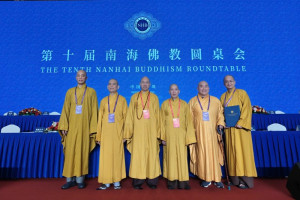
Gallup's ongoing research on religion shows that the influence of religion in the U.S. society is on a decline. Following are the five key findings from the research about religion in the United States over time.
Christianity has always been the dominant religion in the U.S. It still is, however, it is no longer the larger Christian nation that it has been in the past. 74 percent of Americans identify themselves as Christians, 5 percent as non-Christians, and 21 percent as nones (those with no formal religious identity). The research shows that the number of “nones” in the U.S. have increased by 6 percent since 2008, and the number of Christians have decreased by 6 percent.

It was in the 1970s that the number of “nones” started going up. In 1990, the number crossed the 10 percent threshold. In the 40s and 50s, there were only 2 percent or 3 percent who identified themselves as nones. Another increasing trend is the Americans claiming they are no longer a member of a church or a mosque or a synagogue. In 1937, 73 percent of Americans claimed they were a member of a Church. The 80s saw the figure dropping to 60 percent. Last year it was 54 percent, however, this year the figure rose to 56 percent.
53 percent of Americans still believe that religion is “very important” in their lives. However, in 1965, this figure was 70 percent. It was in the 80s that the figure significantly dropped.

72 percent of Americans, when asked this year whether religion is losing its influence in American society, said yes. After 9/11 and in 1957, when asked the same question, the majority of the Americans answered no, they said that the influence of religion in America has been increasing. In the Reagan era, the percentage of Americans who believed that the religion held a major influence in the society and those who believed it didn't are about equal. In 1969 and 1970, 7 out of 10 Americans thought that religion was losing its influence in the American society.
2016 being the Presidential election year saw the connection between politics and religion manifesting itself. Republicans this year have been very religious. Comparatively, a third of the Democrats and the Independents proclaimed their spirituality as well. 20 percent of the Republicans said they were not religious. 37 percent of the other two parties said the same thing. Based on the Exit Poll data, 55 percent of Americans who attend religious services weekly voted for Trump, and 41 percent for Clinton. 30 percent of people who never attend religious services voted for Trump, and 62 percent for Clinton.
The Gallup data clearly shows Americans' declining faith, however, only time will tell whether this is a short-term phenomenon or something that will last for a long period of time.
Source: www.worldreligionnews.com




